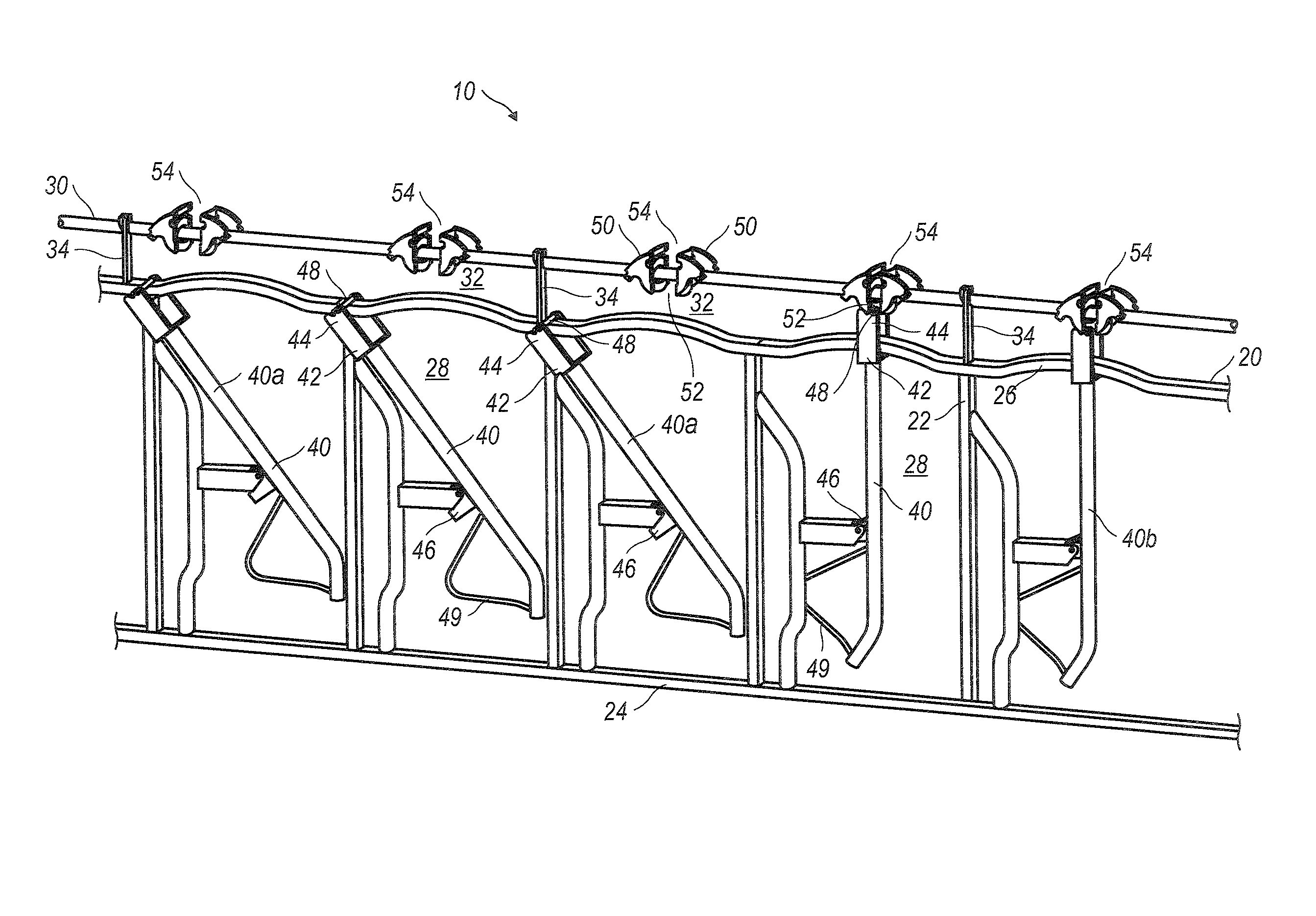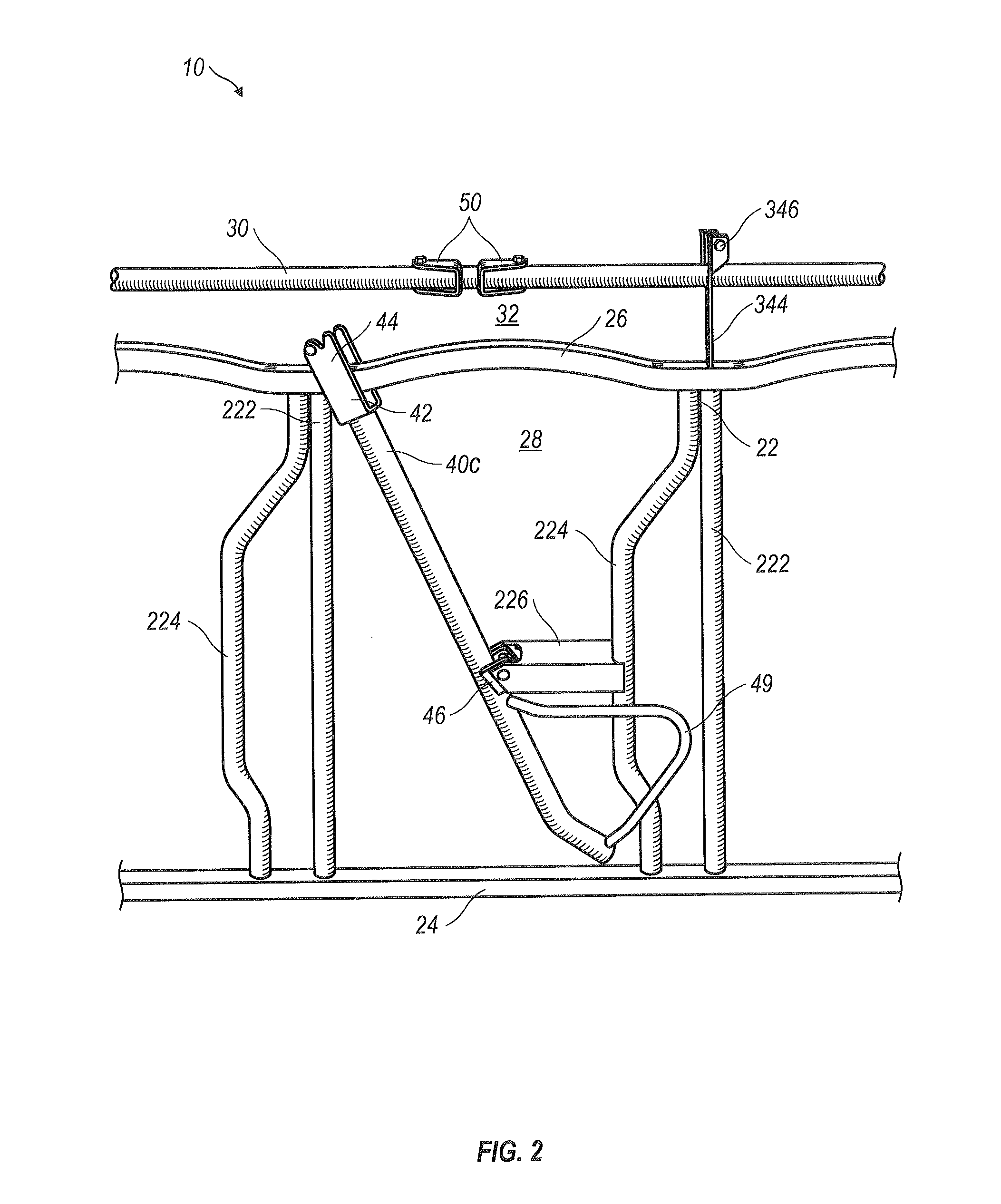Livestock stanchion
a technology for stanchions and livestock, which is applied in the field of livestock stanchions, can solve the problems of reducing the service life so as to improve and improve the size of the livestock opening. , the effect of improving the maintenance and removal of the locking bar
- Summary
- Abstract
- Description
- Claims
- Application Information
AI Technical Summary
Benefits of technology
Problems solved by technology
Method used
Image
Examples
Embodiment Construction
[0030]As required, detailed embodiments of the present invention are disclosed herein; however, it is to be understood that the disclosed embodiments are merely exemplary of the invention that may be embodied in various and alternative forms. The figures are not necessarily to scale, some features may be exaggerated or minimized to show details of particular components. Therefore, specific structural and function details disclosed herein are not to be interpreted as limiting, but merely as a basis for the claims and a representative basis for teaching one skilled in the art to variously employ in the present invention.
[0031]The present invention is directed toward a livestock stanchion 10 with a plurality of forked vertical posts 22 fixed between a substantially horizontal base rail 24 and a horizontal rail 26 to form an essentially co-planar frame 20 having at least one livestock opening 28. See FIGS. 1 and 2. In a preferred embodiment, vertical posts 22 are forked. In such an embo...
PUM
 Login to View More
Login to View More Abstract
Description
Claims
Application Information
 Login to View More
Login to View More - R&D
- Intellectual Property
- Life Sciences
- Materials
- Tech Scout
- Unparalleled Data Quality
- Higher Quality Content
- 60% Fewer Hallucinations
Browse by: Latest US Patents, China's latest patents, Technical Efficacy Thesaurus, Application Domain, Technology Topic, Popular Technical Reports.
© 2025 PatSnap. All rights reserved.Legal|Privacy policy|Modern Slavery Act Transparency Statement|Sitemap|About US| Contact US: help@patsnap.com



